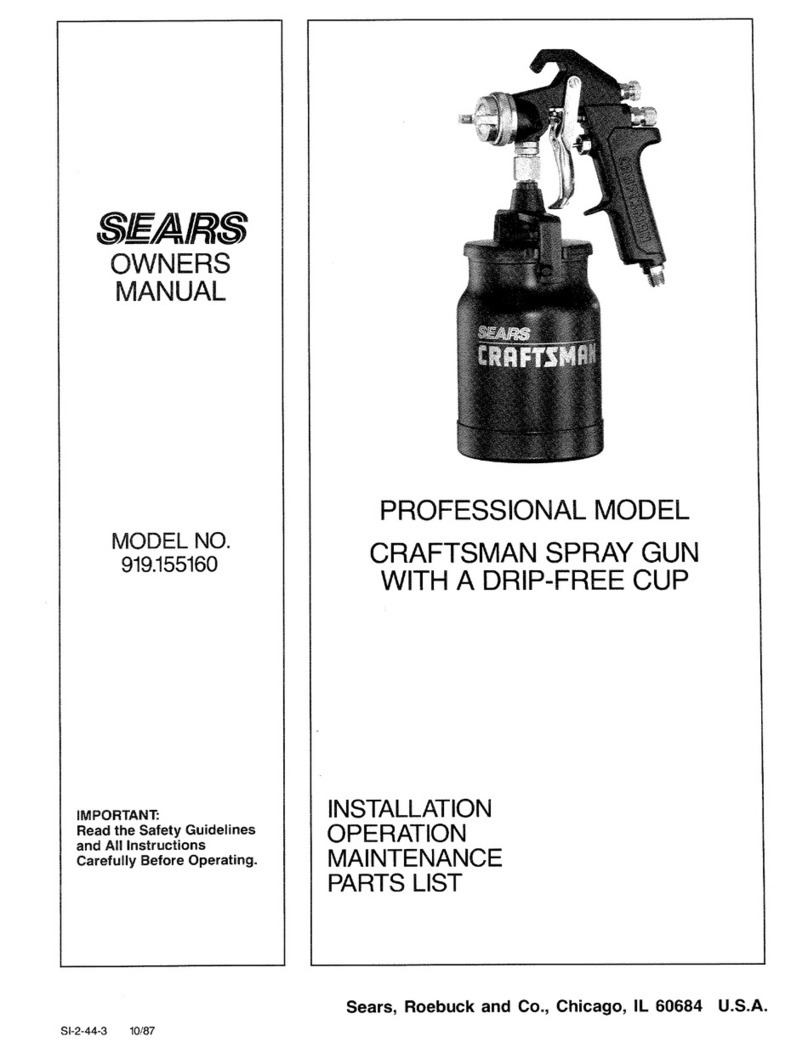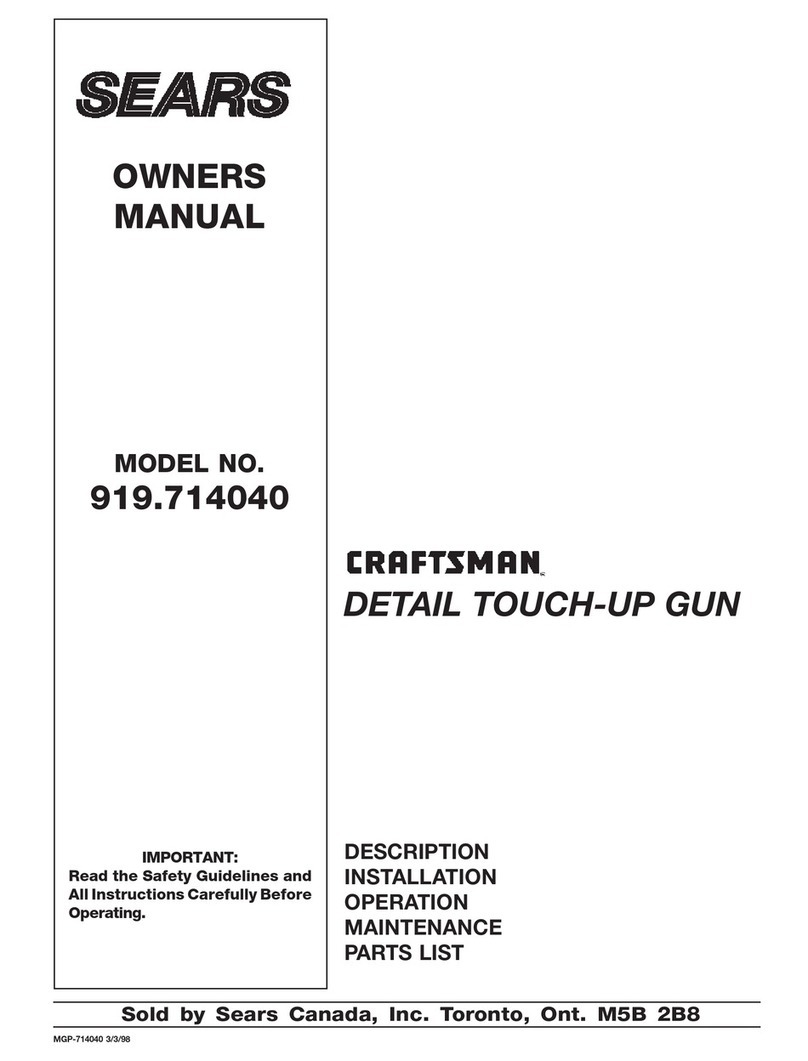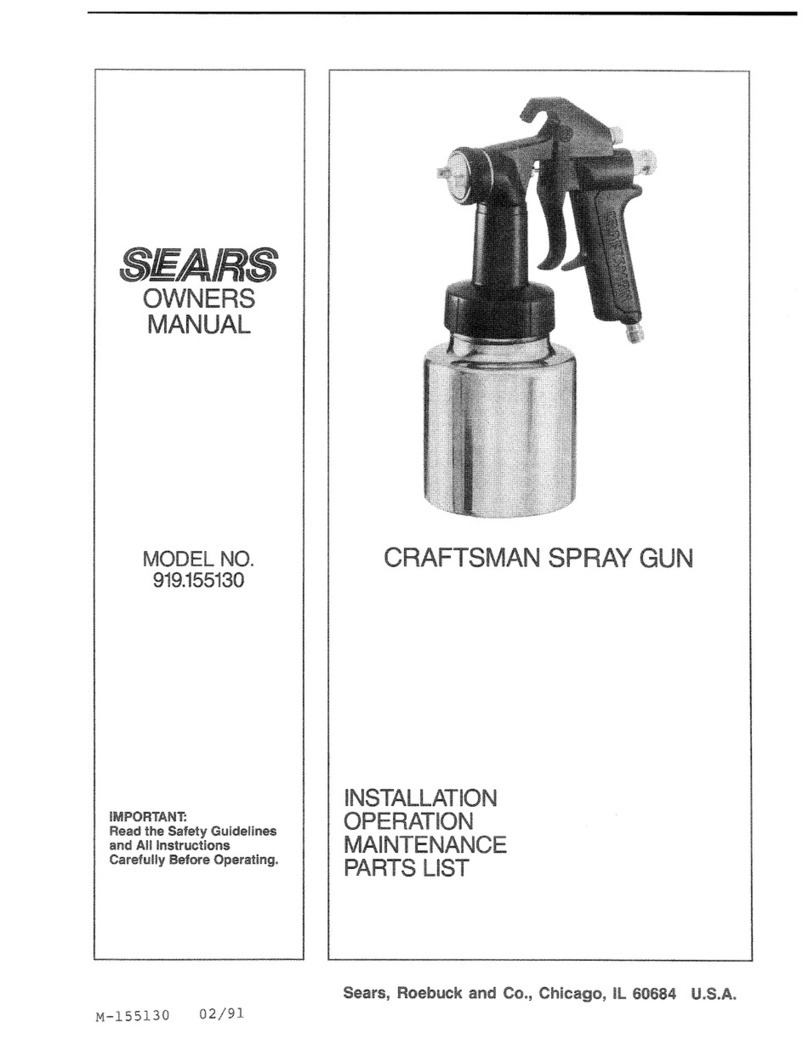
CONTENTS
INTRODUCTION
...
............
.
.....
...
.. .. ..
. .
.......
...
...
..
..
.............
....
.
...
..
....
...
. . 2
\....../
Sears
Airless
Sprayer
.......
....
.
......
.
........
..
.....
.
...
..
...
.
.......
.............
...........
2
Safety
Precautions
..............................................................................
2
BEFORE
PAINTING
..
....
..........
..
....
.........
.
..
....
.......
.
.......
...........
.
..
..........
..
2
PREPARING
PAINT
FOR
SPRAYING
.
...............
........
.
............
..
.
....
.
.....
............
3
OPERATION
.....
.
..
. . . .
......
...
.
.............
.
.....
...
........
. .
...............................
3
Setting
Delivery
Rate
........................
.
..................................
.
................
3
Spraying
Techniques
........
.
...
....
......
.
.....
....
...
...
.....
..
....
..........
.
..
........
.....
3
USEFUL
ACCESSORIES
.
.............
...
.
........
........
..
.
...
.....
.............................
4
CLEANING
PROCEDURES
.......
.
......
.
..
.........
.
......
.
..........
.
....
......
. .
..........
.....
4
TROUBLESHOOTING
....
.
...
.......
...
.....
....
......
....
..
.....
.
..........
.
..
......
...........
. 5
Seized
("Frozen
") Piston
........................................................................
5
Troubleshooting
Guide
................................
...
...............
........
..........
...
...
6
Replacement
of
Wear Parts . . . . . . .. . . . . . . . . . . . . .. . . . . . . .. . . . . . . .. . . . . .. . . .. . . .. . . . . .. . . . . . . .. . . .. 7
Minor
Repairs
........................................................................
.....
...
. . 7
Major
Repairs
....
.....
.......
...
.....
..
....
................
..
....
..........
......
. . .
...
....
.
....
7
PARTS
LIST
...
.
.....
.
....
.
........
..
....
...
...........
.
.......
....
..
.....
....
..
.
.....
.....
.
..
. .
..
9
ASSEMBLY
INSTRUCTIONS
5'
SUCTION
TUBE
. .
....
....
.
.....
..............
..
.
........
. .
..
..
...
10
THINNING
RECOMMENDATIONS
.....
..
...............
.........
.
.....
.....
.
..
. .
.......
........
..
11
ACCESSORIES
..
..........
....
.....................
. .
....
...
.......
............
...
. .
....
.....
...
12
WARRANTY
....
. .
...
.......
.
...
...
...
. . .
..........
. .
.....
.
.....
......
................
. .
.........
13
HOW
TO
ORDER REPAIR
PARTS
................................
......
...
.
....
.
..
....
. .
Back
Cover
CONTAINER-----+\
FILTER
CONTROL
:..----
KNOB
•~---
HANDLE
3-WIRE
GROUNDED)
PLUG































